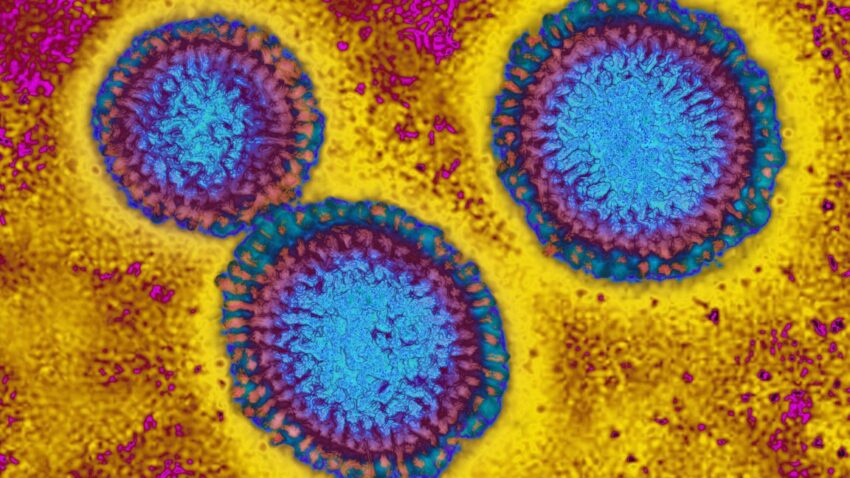
this flu season looks grim as h3n2 Health officials in the United Kingdom are warning that this year’s flu season for the Northern Hemisphere is looking particularly rough—and the US is not prepared.
this flu season looks grim as h3n2
Overview of the Current Flu Season
This flu season, which typically peaks between December and February, is already showing signs of an early and aggressive onset. The primary concern is a new strain of the H3N2 influenza virus that emerged during the summer months, coinciding with the conclusion of the Southern Hemisphere’s flu season. This strain carries several mutations that may enable it to evade immune responses, raising alarms among health officials.
Emergence of H3N2 Mutations
The H3N2 strain has been a recurring player in seasonal flu outbreaks, but the recent mutations have sparked concern due to their potential impact on vaccine efficacy and public health. While the mutations are not severe enough to trigger a pandemic, they could lead to a significant increase in severe illnesses. This could overwhelm healthcare systems, particularly as hospitals are already facing challenges from other respiratory illnesses.
According to the World Health Organization (WHO), the mutations in the H3N2 strain have been closely monitored. The organization has emphasized the importance of vaccination, especially for vulnerable populations, including the elderly and those with pre-existing health conditions. However, the effectiveness of the current flu vaccine against this mutated strain remains uncertain.
Impact on Healthcare Systems
As the flu season progresses, the implications for healthcare systems are significant. In the UK, the flu season has commenced approximately five weeks earlier than usual, leading to a rapid increase in flu cases. This early surge is expected to place considerable strain on hospitals and clinics, which are already grappling with the ongoing effects of the COVID-19 pandemic.
Hospital Preparedness
Healthcare facilities are preparing for a potential influx of patients suffering from severe flu symptoms. Hospitals are implementing contingency plans, including increasing staffing levels and ensuring adequate supplies of antiviral medications and vaccines. However, many healthcare providers express concern that the current healthcare infrastructure may not be sufficient to handle a significant rise in flu cases.
In the United States, the situation mirrors that of the UK, with health officials warning that the country is not adequately prepared for the anticipated flu season. The Centers for Disease Control and Prevention (CDC) has urged Americans to get vaccinated, but there are concerns about vaccine uptake rates. Many individuals remain hesitant to receive the flu vaccine, citing various reasons, including misinformation and vaccine fatigue from the COVID-19 pandemic.
Public Health Messaging
Public health officials are emphasizing the importance of clear communication regarding the flu vaccine and its benefits. They are working to combat misinformation and encourage vaccination among the general population. Campaigns are being launched to educate individuals about the risks associated with the flu and the potential severity of the current season.
Vaccination Rates and Challenges
Despite the availability of vaccines, vaccination rates have been inconsistent. In previous years, public health campaigns have successfully increased awareness and participation, but the lingering effects of the pandemic have complicated these efforts. Many people are still hesitant to seek vaccinations, leading to concerns about herd immunity and the overall effectiveness of vaccination campaigns.
Health officials are particularly focused on reaching high-risk groups, including older adults, pregnant women, and individuals with chronic health conditions. These populations are more susceptible to severe flu complications and are encouraged to prioritize vaccination.
Global Context and Comparisons
The situation in the UK and the US is not isolated; other countries are also bracing for a challenging flu season. In Australia, for instance, the flu season was notably severe, with high hospitalization rates attributed to the H3N2 strain. This has prompted health officials worldwide to prepare for similar outcomes as the Northern Hemisphere enters its flu season.
International Health Organizations’ Responses
International health organizations, including the WHO, are closely monitoring the situation and providing guidance to countries on managing flu outbreaks. The WHO has recommended that countries enhance surveillance efforts to track the spread of the H3N2 strain and its mutations. This data is crucial for informing vaccine development and public health strategies.
Additionally, the WHO has highlighted the importance of global cooperation in addressing flu outbreaks. Countries are encouraged to share data and resources to better understand the virus’s behavior and improve response strategies. This collaborative approach is essential for mitigating the impact of the flu season on public health.
Future Implications
The emergence of the H3N2 strain with mutations raises important questions about the future of influenza management. As viruses continue to evolve, public health officials must remain vigilant and adaptable in their strategies. The potential for increased severity in flu seasons could necessitate changes in vaccine formulation and distribution strategies.
Research and Development
Ongoing research into the H3N2 strain and its mutations is critical for developing effective vaccines and treatments. Scientists are working to understand the mechanisms behind the virus’s ability to evade immune responses, which could lead to more effective vaccination strategies in the future. Enhanced research efforts may also focus on universal flu vaccines that could provide broader protection against various strains.
In addition, public health agencies are exploring the integration of flu vaccination with COVID-19 vaccination efforts. This approach could streamline vaccination processes and improve overall public health outcomes, particularly in light of the ongoing pandemic.
Conclusion
The current flu season poses significant challenges for public health officials in the UK and the US, driven primarily by the emergence of a mutated H3N2 strain. As healthcare systems prepare for a potential surge in cases, the importance of vaccination and public health messaging cannot be overstated. With the right strategies in place, it may be possible to mitigate the impact of this flu season and protect vulnerable populations.
As we move further into the season, continued vigilance, research, and public cooperation will be essential in navigating the complexities of influenza management in a post-pandemic world.
Source: Original report
Was this helpful?
Last Modified: November 14, 2025 at 4:36 am
0 views














